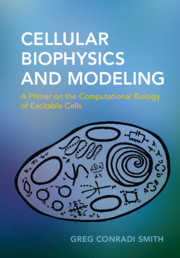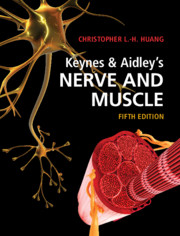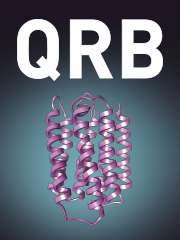Cellular Biophysics and Modeling
A Primer on the Computational Biology of Excitable Cells
£125.00
- Author: Greg Conradi Smith, College of William and Mary, Virginia
- Date Published: March 2019
- availability: In stock
- format: Hardback
- isbn: 9781107005365
£
125.00
Hardback
Other available formats:
Paperback, eBook
Looking for an inspection copy?
This title is not currently available on inspection
-
What every neuroscientist should know about the mathematical modeling of excitable cells. Combining empirical physiology and nonlinear dynamics, this text provides an introduction to the simulation and modeling of dynamic phenomena in cell biology and neuroscience. It introduces mathematical modeling techniques alongside cellular electrophysiology. Topics include membrane transport and diffusion, the biophysics of excitable membranes, the gating of voltage and ligand-gated ion channels, intracellular calcium signalling, and electrical bursting in neurons and other excitable cell types. It introduces mathematical modeling techniques such as ordinary differential equations, phase plane, and bifurcation analysis of single-compartment neuron models. With analytical and computational problem sets, this book is suitable for life sciences majors, in biology to neuroscience, with one year of calculus, as well as graduate students looking for a primer on membrane excitability and calcium signalling.
Read more- The seamless integration of empirical and mathematical tools, and their introduction in a familiar biological context, enables students to appreciate the significance and utility of these tools
- Includes numerous illustrations focused on graphical aspects of modelling and encourages a hands-on, problem solving approach through both pencil and paper analysis and user-friendly computational assignments
- Provides mathematics instruction at a basic level appropriate for undergraduate life science majors with one year of calculus, but with an accompanying depth of knowledge and relevance to biology
Reviews & endorsements
'In this text, Conradi Smith does an excellent job of teaching students with no mathematical training beyond calculus how to use differential equations to understand the basic principles of cell physiology and excitability. He skilfully walks students through the steps of modeling and analysis, all the while working to develop intuition and insight into how things work. His emphasis on computational methods for solution as well as graphical and geometrical means for interpretation enables him to communicate complex ideas in understandable ways. Furthermore, his patience and attention to detail will be appreciated by those students who have not had extensive exposure to the art of mathematical modeling. This text is a wonderful addition to the mathematical biology textbook literature.' James P. Keener, University of Utah
Customer reviews
Not yet reviewed
Be the first to review
Review was not posted due to profanity
×Product details
- Date Published: March 2019
- format: Hardback
- isbn: 9781107005365
- length: 394 pages
- dimensions: 253 x 178 x 24 mm
- weight: 0.92kg
- contains: 21 b/w illus. 248 colour illus. 6 tables
- availability: In stock
Table of Contents
1. Introduction
Part I. Models and Odes:
2. Compartmental modeling
3. Phase diagrams
4. Ligands, receptors and rate laws
5. Function families and characteristic times
6. Bifurcation diagrams of scalar ODEs
Part II. Passive Membranes:
7. The Nernst equilibrium potential
8. The current balance equation
9. GHK theory of membrane permeation
Part III. Voltage-Gated Currents:
10. Voltage-gated ionic currents
11. Regenerative ionic currents and bistability
12. Voltage-clamp recording
13. Hodgkin-Huxley model of the action potential
Part IV. Excitability and Phase Planes:
14. The Morris-Lecar model
15. Phase plane analysis
16. Linear stability analysis
Part V. Oscillations and Bursting:
17. Type II excitability and oscillations
18. Type I excitability and oscillations
19. The low-threshold calcium spike
20. Synaptic currents.
Sorry, this resource is locked
Please register or sign in to request access. If you are having problems accessing these resources please email [email protected]
Register Sign in» Proceed
You are now leaving the Cambridge University Press website. Your eBook purchase and download will be completed by our partner www.ebooks.com. Please see the permission section of the www.ebooks.com catalogue page for details of the print & copy limits on our eBooks.
Continue ×Are you sure you want to delete your account?
This cannot be undone.
Thank you for your feedback which will help us improve our service.
If you requested a response, we will make sure to get back to you shortly.
×






